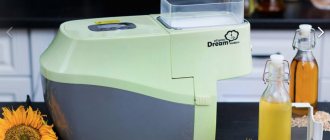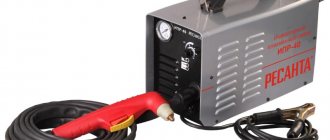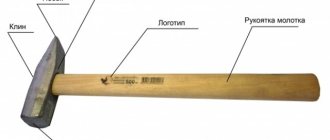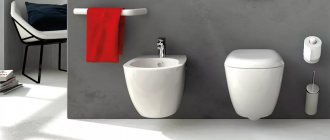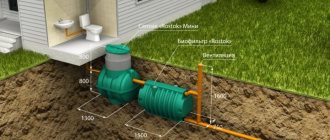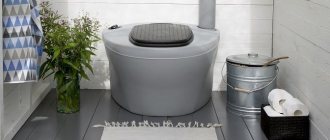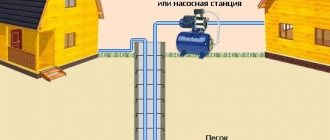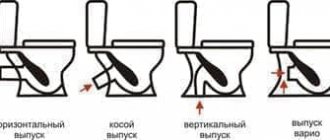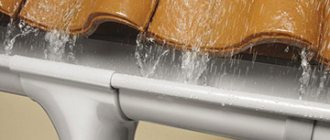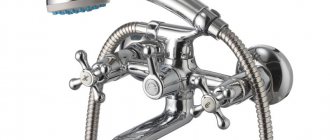Basic requirements for paint
A well-chosen paint and varnish coating is like a second “skin” for the wall material. A comparison with a person’s clothing is appropriate: it warms and protects in cold weather, and with the right choice, your appearance will change for the better.
These criteria apply to surface painting that:
- prevents corrosive wear of the iron sheet forming the walls or roof;
- preserves materials, protecting them from temperature changes, high humidity, and atmospheric influences;
- gives the entire building a “neat” look, changes the design and exterior of the facade.
The wealth of paint and varnish solutions is difficult to describe in a short period of time. The industry offers a choice of coatings for exterior and interior use, wear-resistant, bright, indelible with water and solvents, and with optical effects. Using airbrush, you can easily create any image you want on a gray wall, create a masterpiece of modern art - this is also possible. The types of paints and their purposes will be discussed further.
For outdoor use
“External” paints traditionally work in spartan conditions: they are exposed to precipitation, wind, and nature constantly tests the coating for strength. The paint layer applied to the walls from the outside must withstand temperature changes from minus to plus without consequences, not peel off, not be damaged, and maintain an unchanged appearance. Therefore, compositions for interior work are not categorically suitable for this purpose, because their tasks are different.
Domestic
Paint coatings for interior decoration, unlike others, must “breathe” - such requirements apply to materials applied to walls in residential premises. In a garage, it is not necessary to scrupulously follow hygiene requirements regarding painting the inside of the building, but you should also not use components with a characteristic chemical odor.
The interior decoration of the walls should not match the exterior in color or composition; if desired, you can at least stick wallpaper or lay lining.
Some features of metal coloring
Roof painting
Every caring owner who is thinking about what and how to paint an iron fence or other structures should know some of the features of this process:
- The best result can be achieved only if iron paint is used;
- Iron is a material that, without proper protective coating, becomes covered with rust in the shortest possible time. Therefore, to finish it, you should use an alkyd primer containing phosphate or chromate. Primers of this type are able to protect the surface of iron much better than others;
- Today, galvanized iron is often used to create roofs, due to the fact that its resistance to corrosion is much higher. Painting the iron will further increase the lifespan of galvanized metal, which will also give the structure a much more attractive appearance;
- The coating created with alkyd paints is much more durable than the finish produced using acrylic or oil paints;
- The instructions included with each paint and varnish material certainly contain information about which surfaces are appropriate to paint with it. Don't forget to read it carefully before starting work.
Varieties
Long gone are the days when oil paints dominated in all areas. For various purposes, consumers use alkyd, epoxy, acrylic, pentaphthalic, polyurethane and water-based enamels.
The quality of the coating they create meets the requirements for it - bright, durable, reliable. And this is not counting the application methods: manually, with a brush and roller, with a spray bottle or from an aerosol can.
Pentaphthalic enamels
The main advantages of this group can be easily described in a few words: price, availability and acceptable quality. The PF-115 brand remains the most common and popular. There are also disadvantages: sensitivity to surface preparation, low durability.
Acrylic paints
A composition based on a water-soluble polymer that forms a durable and resistant coating. Does not wear out, tolerates both dry and wet cleaning, does not accumulate dust. There is a wide range of colors available to choose from - from white to purple.
Able to withstand temperature changes. They are not demanding on application technology - just clean the surface from dirt, rust and grease. The enthusiasm for the benefits of enamel is dampened by its cost - not the most affordable.
Epoxy
Polymer coatings with high adhesion are the main advantage of epoxy paint. The number of layers can be reduced to one, without affecting the quality. You can safely pour water, acids, alkalis, or spread oil on such a coating – it doesn’t care about anything.
The disadvantages of the “magic” coating are the following: a long polymerization period, sensitivity to ultraviolet radiation, heat, and aging effects.
Alkyd
Universal, monocomponent enamels, affordable, well adapted to contact with various surfaces (wood, concrete, metal, plaster). Often used by garage owners, they are justifiably popular. But they take a long time to dry, are susceptible to humidity and chemicals, and require an air temperature of at least 5 degrees when applied.
Polyurethane
Low abrasion, elasticity at the level of rubber, a thick but elastic layer - these are the characteristics of polyurethane coatings. They are not afraid of either water or chemical solvents. Before painting, the surfaces will have to be prepared with special care, removing traces of oils and rust, dirt and dust. In addition, the composition is two-component and toxic, requiring caution when working with enamel.
Water-based
Water-based paints are the most common. They consist of a mixture of small particles (pigment and plastic) in water. To protect metal walls in a garage, there’s no better way to do it: we get a water-resistant, anti-corrosion, bright and durable coating. It is not affected by building subsidence or temperature - due to its elasticity, the layer maintains its integrity. It polymerizes in 4 hours, is not afraid of direct sunlight, and has increased adhesion.
Paint selection
Now there is a large selection of different paints for a metal garage. The main thing to pay attention to when choosing is:
- Metal or concrete walls and floors in a building.
- Climate of the region.
- Is it heated or not?
And in order not to make a mistake with the choice, it is better to study each of the types of enamels presented and choose the one that suits best. Acrylic bases are more often used to paint garage walls. They are not subject to abrasion and retain their qualities even with temperature changes. After cleaning with dry and wet agents they do not lose their original properties. The bases are not subject to destruction due to high humidity. Acrylic has a wide range of shades, so everyone will find something they like. Acrylic bases are good antistatic agents, so less dust will settle on the walls and ceiling area. The main reason for choosing not to use acrylics is the high price of enamels, and due to the large area, painting will cost a considerable amount. Enamels based on epoxy resins. This type of base cannot be applied without first priming the surface. The big advantage is that the enamel applies the first time, there is no need to apply several layers. Epoxy paints are impact-resistant and do not change due to the effects of exhaust gases, acids, and alkalis. It doesn't take much effort to clean the walls of your garage from dirt. Therefore, this is also a good option for painting the inside of the garage. But they have their drawbacks. Epoxy bases do not protect the surface well from ultraviolet rays and take a long time to dry. Alkyd bases have their advantages: resistance to ultraviolet rays, good adhesion to the surface, and fit well even on an unprepared surface. However, such a coating takes a long time to dry, the layer turns out to be loose, so before applying you need to weigh the pros and cons. Polyurethane paints are wear-resistant, durable and moisture-proof, increasing the service life of the painted room. Protect the surface from influences by forming a dense protective layer. Therefore, they are often chosen for coating in the garage.
Acrylic paint for concrete
Alkyd-urethane enamel
Polyurethane paint for concrete Pay attention to: What to choose: painting or wallpaper
For unheated
If the room is not heated, it is better to choose polyurethane bases, which can be used to cover metal walls at any time of the year. Acrylic mixtures also react well to temperature changes, which is why experienced painters often use them.
For heated
But choosing what paint to coat a heated iron garage is much easier. You can choose acrylic, alkyd, pentaphthalic bases. It is better to study the presented pros and cons and choose what type of paint to use.
For external gates
To paint external metal gates, you need to make sure that the paint is of medium viscosity. It’s better not to use leftover enamel from previous works, but to buy a new jar and add color. Next, you need to thoroughly scrape off the previous layer of paint and prime the surface. The next stage is sanding and priming. You can use a high-pressure hose to remove paint chips from the outside of doors. As for the type of paint, it is better to choose enamel based on alkyds or silicon. Such mixtures fit well and protect walls from rust. A brush or roller is suitable as a tool. The main thing is not to carry out painting work during rain or snow, otherwise the layers will lie unevenly and everything will have to be redone.
Choosing a color
Despite the existence of hundreds of shades, the ability to mix, match and combine them as you like, the problem of what colors to paint the garage does not lose its relevance. In essence, it comes down to choosing from several options the one that suits the worldview, the design of nearby buildings or the owner’s vision.
It is better to adhere to the rule of the golden mean - neither white, nor black and not luridly flashy colors. After all, a garage is not painted every day; the chosen shade should not cause irritation and the desire to immediately change it to another.
A calm, moderately saturated color, evenly applied to the walls, will optimally satisfy the customer’s expectations.
Painting the walls in the garage
When choosing paint for the walls in your garage, you need to pay attention to the appearance of the final result. It is important that the paint is resistant to open fire, since fire hazardous elements are often stored in the room. Also, the product must be resistant to mechanical damage and contact with chemicals. Poor absorption of odors will be a significant plus.
- Enamel paints are perfect for painting walls. Water-based alkyd products have become the most popular: they not only have all of the above properties, but also have a long service life. The composition of alkyd paints completely eliminates solvents, so they are considered the most environmentally friendly.
- A good option would be silicone paints , which are universal (they can be applied to brick, wood, metal and concrete substrates).
- Polyurethane enamels are often used , but keep in mind that they have a high level of toxicity. It is recommended to apply this dye at intervals of 30-40 minutes.
- If the wall is plastered, use resin-based polysilicon compounds
- The use of emulsion paints ensures that dust does not stick to the walls.
It is important to level the wall before application - this will simplify the process and improve the final result.
Selection of painting tools
A paint brush remains a classic of the genre when painting a metal garage: it ensures uniform application of paint, optimal consumption and an acceptable result in quality. Other options are a roller and a spray gun. They require a little more complete mastery of the art of painting, and also, in the latter case, the presence of the apparatus itself.
Paint brush
It remains an indispensable, basic tool: mastering work skills is easy, and the benefits from it are priceless. The only serious drawback of the brush is the increased paint consumption. In poorly made products, bristles may fall out intensively, remaining in the form of a “pattern” on the painted surface.
When choosing a brush, pay attention to the width and fastening of the bristles, checking its strength. Having several pieces of different sizes in stock, it is easy to paint complex surfaces, including curved ones (pipes and ribbed profiles).
Roller
"Big brother" brush. Allows you to increase productivity while reducing the consumption of paints and varnishes. When choosing a roller, make sure that the tool is not too wide and fits your hand comfortably.
Clue. To realize the benefits of a roller, you will need a special tray or cardboard on which to squeeze out excess paint.
Spray gun
A special unit designed for uniform application of paint and varnish coating over large areas with normalized consumption and a thin layer. This tool is used by professionals who deal with painting every day.
For use in domestic conditions, it is unnecessarily difficult to maintain and does not justify itself due to the frivolous size of the surfaces to be painted. In addition, after finishing the work, all parts of the spray gun will need to be thoroughly washed to remove paint residues to prevent it from hardening.
Which paint is better to choose
At the first stage, it is important to understand which paint to give preference to. Naturally, this directly depends on your budget, the technical characteristics of the garage and many other factors. Please note that if the garage is not heated , it is better to use facade paints; they are more resistant to temperature changes.
What paint to choose for an unheated garage
In winter, sudden temperature changes are possible, which negatively affect the painted surface. In this case, preference should be given to the following coating options:
- Polyurethane or alkyd-urethane enamels . You will need to spend a lot of money on such a finish, but the result is guaranteed to please you. The enamel is suitable for any substrate; it is highly wear-resistant and can withstand temperature changes and high humidity.
- Acrylic paints (water-based). A more budget-friendly option, but it is additionally necessary to apply varnish to the paint. This will help reduce the abrasion of the coating.
Choosing a material for painting a room with heating
A heated garage allows you to use a much wider variety of paint materials. These can be all of the above paints, as well as:
- Vinyl. Keep in mind that the presented dye is suitable only for interior work, as the wind will lead to the destruction of this coating.
- Oily. Oil-based paints will give the wall a beautiful appearance. After drying, a film is formed on the outer part, protecting the surface. Keep in mind that this paint is considered outdated and one of the most toxic.
- Alkyd. This model is particularly resistant to temperature changes. You can choose glossy or matte varieties of alkyd paints, giving the room a unique look.
- Pentaphthalic. The presented material is made on the basis of pentaphthalic resin, which gives the coating durability. In addition, the composition contains solvents, driers and oils.
Technology of work execution
Painting requires unconditional adherence to the rules and technology. It is different for each type and material. If the manufacturer requires dust removal and thorough cleaning of the surface before painting, then this is what should be done.
The same applies to the proportions of two-component compositions and the addition of solvents: deviation from the recommendations indicated on the label, all sorts of experiments will lead to unpredictable results.
Preparing the surface
Completion of the initial stage determines the success of subsequent ones, so it must be taken seriously, with an understanding of the essence of the issue. The metal is cleaned of dirt, rust, and the previous layer of paint. To do this, it is allowed to use a special brush attachment on the grinder. Concrete surfaces are leveled, cracks and depressions are sealed.
The easiest way to prepare wood is the softest material, but if old paint or dirt is deeply ingrained, you will have to try even here. At the end of the procedure, a clean surface is obtained, ready for painting or priming.
Painting the walls
After applying primer where required, begin painting. Working with a brush, we apply the material with smooth, back-and-forth movements, achieving a layer of even thickness and consistency. The same applies to the roller. When using a spray gun, hold the spray head at a certain distance, evenly covering the wall with paint, remembering to move from top to bottom or from left to right, but not diagonally or in broken lines.
If it is necessary to apply several layers, proceed to subsequent ones after the first has completely dried. When working inside a garage, be sure to use a respirator and ventilate the room to avoid poisoning.
Ceiling
Painting horizontal surfaces requires some skill. If the ceiling is high, then a stable ladder of suitable height will be required. The easiest way to do this is with a roller, especially one with a long handle. While working, protect your eyes, face, and use a hat - paint splashing cannot be avoided, so it is better to take care of this in advance. When applying 2 layers, let the first one dry first.
Gate painting
In terms of complexity, painting garage doors is not much different from a similar procedure applied to walls. A layer of paint coating is applied sequentially from the inside and outside according to a pre-selected plan, and the hinges, thresholds, upper and lower shelves are evenly painted with a thin brush.
A roller will be needed to paint large collars; a brush will help to cover other hard-to-reach areas with a thin layer of paint.
Painting works
Painting an individual parking lot should not only add aesthetics to its appearance. It is necessary that the finishing protects the building from external influences as much as possible.
Paints and varnishes for metal garages
A metal structure not protected with paint quickly rusts.
When thinking about what paint to paint a metal garage, consider the following requirements for the material.
- The coating must contain anti-corrosion additives.
- The material must be resistant to atmospheric influences and, above all, resistant to moisture.
- Another condition is good paint resistance to temperature changes.
- The composition should dry relatively quickly after application.
Enamel paints are popular at these events. They have all the qualities listed above and can provide the garage with reliable protection for a long time.
The most common are alkyd and silicone enamels.
- However, they are increasingly being replaced by more modern water-based acrylic paints. They are universal and suitable for painting an individual parking lot both outside and inside.
- Unlike alkyd and organosilicon analogues, they do not contain solvents. Therefore, they have greater environmental friendliness and fire safety.
A rusty structure can be painted with special paint.
Note! When thinking about how to paint a rusty garage, you can choose a special latex-acrylic material for such surfaces. Such coatings already contain an anti-corrosion primer, which acts on rust spots and removes them.
- In other cases, in order to remove rust from a garage completely covered with it, you need to treat the metal with an anti-corrosion primer. Such materials contain a rust converter.
- An important rule is that experts recommend buying primer and painting material from the same manufacturer. This way you will ensure the best compatibility of coatings, which will increase the quality of the final result.
- When thinking about how to paint a metal garage, choose the color of the coating. It’s good if the interior decoration is light. Garages do not have a large area and often have insufficient lighting. Light colors will expand the space.
Next are the stages of painting work.
Everything you need to get the job done.
- First you need to purchase materials . Find out in advance how much the primer, paint, solvent, remover you choose, etc. costs.
- Also prepare tools and equipment : roller, brush, if necessary - sprayer, stepladder, coating container, etc.
Old paint can be removed with a drill or grinder with an abrasive attachment.
- If the garage has already been painted, the old coating must be removed . This can be done with a drill with an abrasive attachment or a metal brush, a hair dryer, or a remover.
- Then the metal needs to be sanded using sandpaper..
- Next, degrease the surfaces with your own hands using any solvent.
- After this, the metal must be primed in 2/3 layers. The composition will improve the adhesion of paint and base and protect the surface from corrosion. The primer will also make the base more even, which will improve the quality of the paint.
- When the primer is completely dry, wash the surfaces with water to remove dirt and dust.
The photo shows the application of the first, vertical layer of paint.
- Paint the walls with a roller from top to bottom in a vertical direction . This will make it easier to clean up spills when they occur.
Note! The instructions recommend applying each strip of coating, slightly overlapping the previous one. This way the coloring will be uniform, without gaps or transitions.
- Difficult areas - edges and corners, paint with a brush . When the coating has dried after 24 hours, apply another coat of paint. Do this in a horizontal direction.
Paints for buildings made of stone-like materials
The inside of the parking lot can be coated with light water-based acrylic paint.
The best paint for garages made of stone-like materials - all types of concrete, brick (unfinished or plastered) - is polymer-based.
Moreover, each type of these compositions has its own advantages.
Polyurethane enamel for concrete.
- Epoxy primer enamels can be applied without first priming the base for painting.
- Perchlorovinyl analogues tolerate negative temperatures well.
- Acrylic water-emulsion compositions can be applied to freshly laid plaster and concrete. In addition, they have excellent weather resistance.
- Polyurethane concrete paint for garage has increased chemical resistance and wear resistance.
Polymer coatings can be used both indoors and outdoors. If necessary, they can be painted in any color and tone using tinting paints and pastes.
The compositions will reliably protect concrete walls, floors and ceilings from mechanical loads, moisture, and aggressive environments. Special paints strengthen the base and increase its service life.
How to prepare a rusty garage for painting
First of all, you will need to remove the rust using a brush, a special attachment for a power tool. The quality of the paint depends on the thoroughness of cleaning. It is allowed to use chemical solvents, but after them you will have to wash off all the resulting products with plenty of water.
There should not be the slightest trace of corrosion on the surface, otherwise they may continue to “live” under the paint layer, destroying it and the metal. Some epoxy compounds allow for incomplete cleaning of steel surfaces before painting, but you will still have to remove peeling and corrosion bubbles.
Choosing material
For a long time, oil-based types of paints were used to color metals; such coloring even acquired the status of traditional.
Today, thanks to the excellent properties of modern primers, it has become possible to use the following types of materials for painting such bases:
- Acrylic (water-soluble and non-water-soluble);
- Alkyd;
- Materials based on epoxy resins.
Advice. Do not use water-dispersed compositions for painting metal. You need those finishing materials that contain anti-corrosion additives, and an even better option may be products with the addition of a rust converter, which form a dense protective film on the surface.
Features of painting plastered and concrete surfaces
Modern polymer compositions are easily applied to gypsum plaster, concrete floors or ceilings. The main conditions that need to be met are that the surface must be clean, dry, and level. Paint will not adhere to whitewashed walls; you will need to first clean and prime them. Potholes in concrete are filled with cement mortar and rubbed flush with the main plane.
After plastering, plasterboard panels are painted with water-based compositions with the addition of tints of the required color. Alkyd enamels are good for this, famous for their adhesion and the formation of a durable, although long-drying, layer.
Choosing a color for your garage door
To paint garage doors, paint that is resistant to temperature fluctuations is used.
The garage entrance should not stand out against the background of the house and have bright, rich shades. The design is made for long-term use, but the irritating color will get boring within a short time and will have to be repainted.
Standard colors chosen:
- Grey, steel, dark gray (graphite). The color is unfairly considered boring, but it has many shades; silver is often used. It is preferable to use matte paints to reduce the visibility of small defects on the plane of the canvas.
- Brown, dark beige, with a reddish tint. All colors and tints look good in combination with brick, concrete, and wooden walls.
- Muted blue, green, sea green. Suitable for gates if there are green spaces nearby.
For painting, combine different colors. The main thing is to choose them in accordance with the combination table, and not to use leftover paint from other works in the house.
